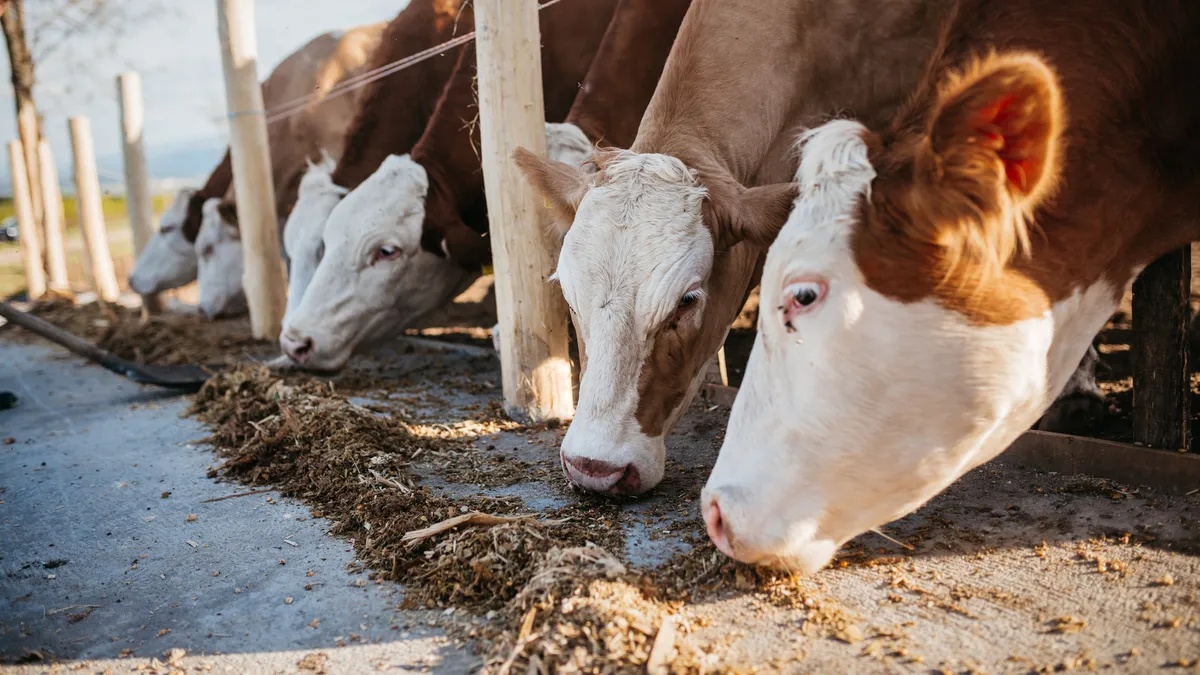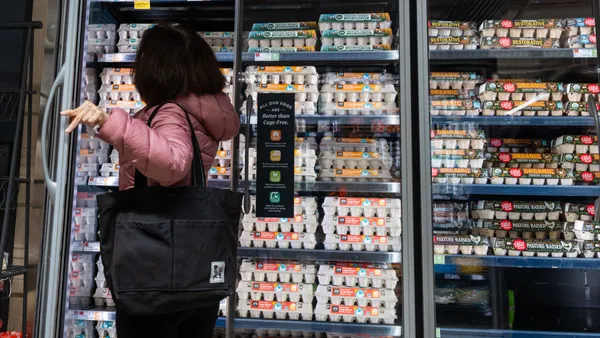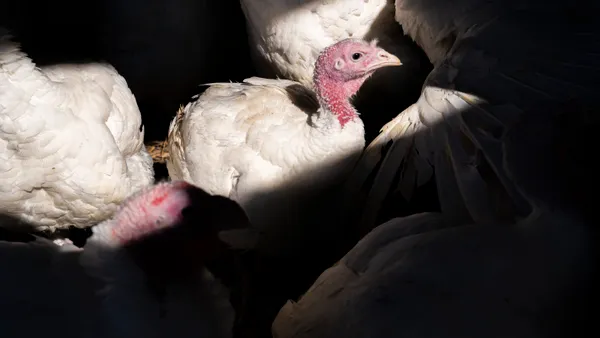Dive Brief:
-
The nation’s cattle supply is still declining even as summer rains begin to improve drought conditions across the Midwest, the U.S. Department of Agriculture reported Friday.
-
The number of cattle and calves on farms, ranches and feedlots totaled 95.9 million head, down 3% from last year, according to USDA’s biannual July 1 Cattle report. Declines occurred among all inventory types, including heifers, steers, bulls and calves of all sizes.
-
Herd numbers have reached their lowest point since the start of the current cattle cycle in 2014, due to prolonged periods of dry, hot weather. Recent rains have alleviated drought conditions in parts of the country, but concerns remain, a livestock expert said during a USDA briefing.
Dive Insight:
A combination of weather, labor and inflationary pressures have affected cattle producers in the past few years. That's being exacerbated by recent drought conditions, which have fried forage supplies and led to smaller herd numbers.
Over the past 18 months, drought has varied in much of cattle country. According to the U.S. Drought Monitor, cattle areas with moderate and severe drought increased to 61% and 43%, respectively, at the end of December. They have since improved to 41% and 20% at the end of June.
“With recent rains in certain areas of the U.S., drought levels have come down,” Travis Averill, livestock branch chief at USDA’s National Agricultural Statistics Service, said at the briefing. “So the impact has improved, although there’s still a lot of concerns moving forward due to the length of the drought in parts of the U.S., as cattle come to rely on forages out there.”
Cattle prices have steadily increased during the COVID-19 pandemic amid drought and supply chain disruptions. In recent months, beef cattle on average have gone for $173 per hundred weight, 23% higher than the same time last year.
As supplies continue to decline, experts are anticipating even higher prices to come.
Total inventory has not been this low since the start of the current cattle cycle in 2014. After years of herd rebuilding, supplies peaked at 102.8 million head in 2018. They have only declined since then, according to the latest report.
The number of cows and heifers that calved are down 2% from last year, as beef producers decline to expand their herds amid higher costs. The preliminary 2023 calf crop is estimated to be 33.8 million head, down 2% from last year.
There are 13.1 million cattle on feedlots, down 2% from the previous year. Feedlots with capacity over 1,000 head accounted for 86% of the total. The feeder cattle supply is at 34.4 million, down 4% from a year ago.











